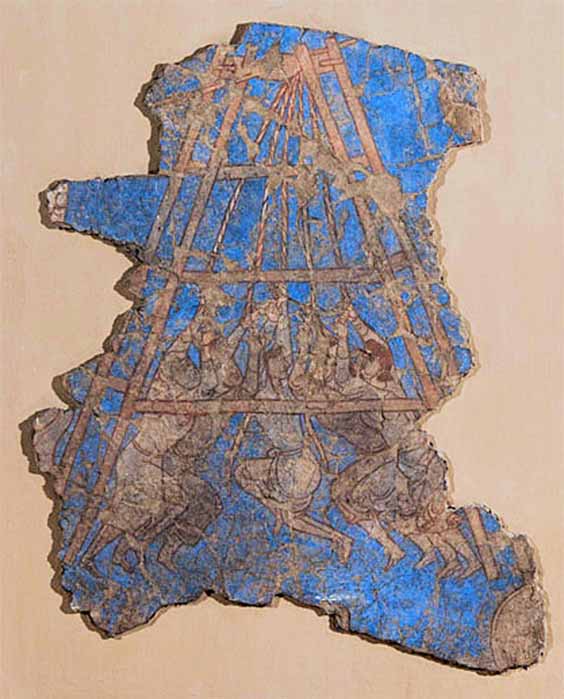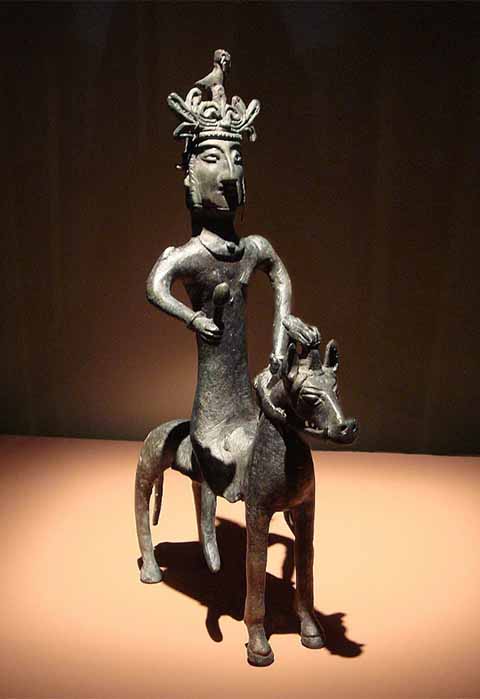The 751 AD Battle Of Talas Deciding The Fate Of Medieval Central Asia
In the eighth century, as Charlemagne forged his European empire, and the Vikings emerged from the bowels of Scandinavia as the most fearsome raiders of their time, fierce battles raged simultaneously in a landscape, replete with rugged deserts, titanic mountains and endless plains, in a faraway land to the East. The battleground was in Central Asia, an enormous region tucked in between the Middle East and the Far East where the Arabs, Turks, Tibetans, and Chinese fought relentlessly to impose their political authority on each other, and on the diverse and ancient realms they aspired to make their subjects. Amidst the uneasy alliances, violent betrayals, and brutal conflicts, two major players, the Chinese and the Arabs, would meet in pitched battle for the first and last time in 751, in what would be a clash of cultures and arms that would determine the fate of medieval Central Asia.

Arabs besieging the city of Samarkand, captured in 722 AD. Palace of Devastich (706-722), Penjikent mural (Public Domain)
The Tibetan-Türgish Alliance
In the year 729, the army of the Tibetan kingdom was called upon by its ally, the Türgish, a Turkic confederation, to intervene in the province of Sogdia located in Western Central Asia, at the request of the native Khurasanians. Open conflict had erupted here after an Arab invasion by the Umayyad governor, Asras al-Sulami, and the introduction of a series of repressive policies. The combined regiments of the Türgish, the Khurasanians and the Tibetans proved too much for the Arabs, who lost all their gains in Sogdia with the exception of the ancient city of Samarkand and the fortresses of al-Dabusiyya and Kamarga, which remained in their possession.

Possible Sogdian King Devashtish, executed in the autumn of 722. National Museum of Antiquities of Tajikista (CC BY-SA 2.0)
The Türgish, and their enigmatic leader Su-lu (or Suluk) commenced their reclamation of Sogdian land by besieging the smaller stronghold of Kamarga, but they were met with stiff Arab resistance. With the Arabs holding up very well, Su-lu made the unusual step of bringing in Khusraw, a descendant of the last Sassanid emperor of the Persian empire, Yazdigird III and captive of the Türgish, in an effort to persuade the Arabs to lay down their arms. However, despite his demand for the restoration of the Sassanid throne, the Arabs remained unconvinced, compelling Su-lu to launch a frontal assault. With Su-lu leading the charge within the reach of Arab archers, the Türgish commander was extremely lucky not to have picked up a mortal wound.
Like this Preview and want to read on? You can! JOIN US THERE ( with easy, instant access ) and see what you’re missing!! All Premium articles are available in full, with immediate access.
For the price of a cup of coffee, you get this and all the other great benefits at Ancient Origins Premium. And - each time you support AO Premium, you support independent thought and writing.
Jake Leigh-Howarth holds a masters degree in Modern History from the University of Leeds, where he specialized in the travelogues of Western visitors to Soviet Central Asia. His favorite historical periods include the Tamerlane Empire, the Mongolian Empire, and the Eleusinian Mysteries of Ancient Greece.
Top Image: Mural of Turkic cavalry, Beshbalik (10th Century)(CC0)



















